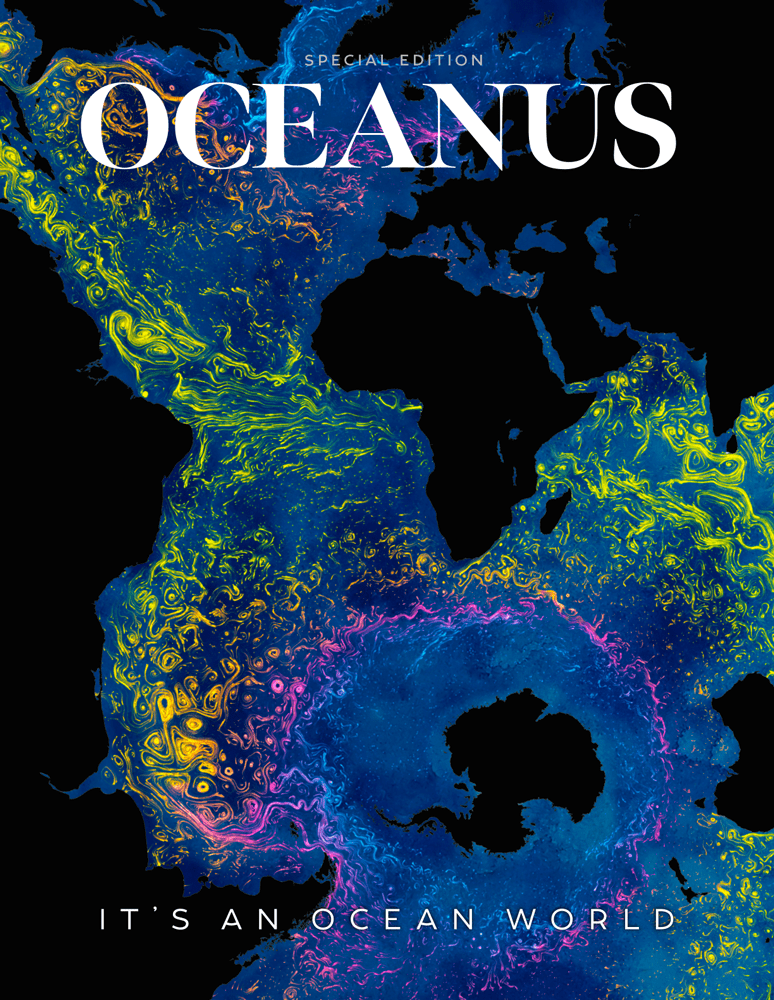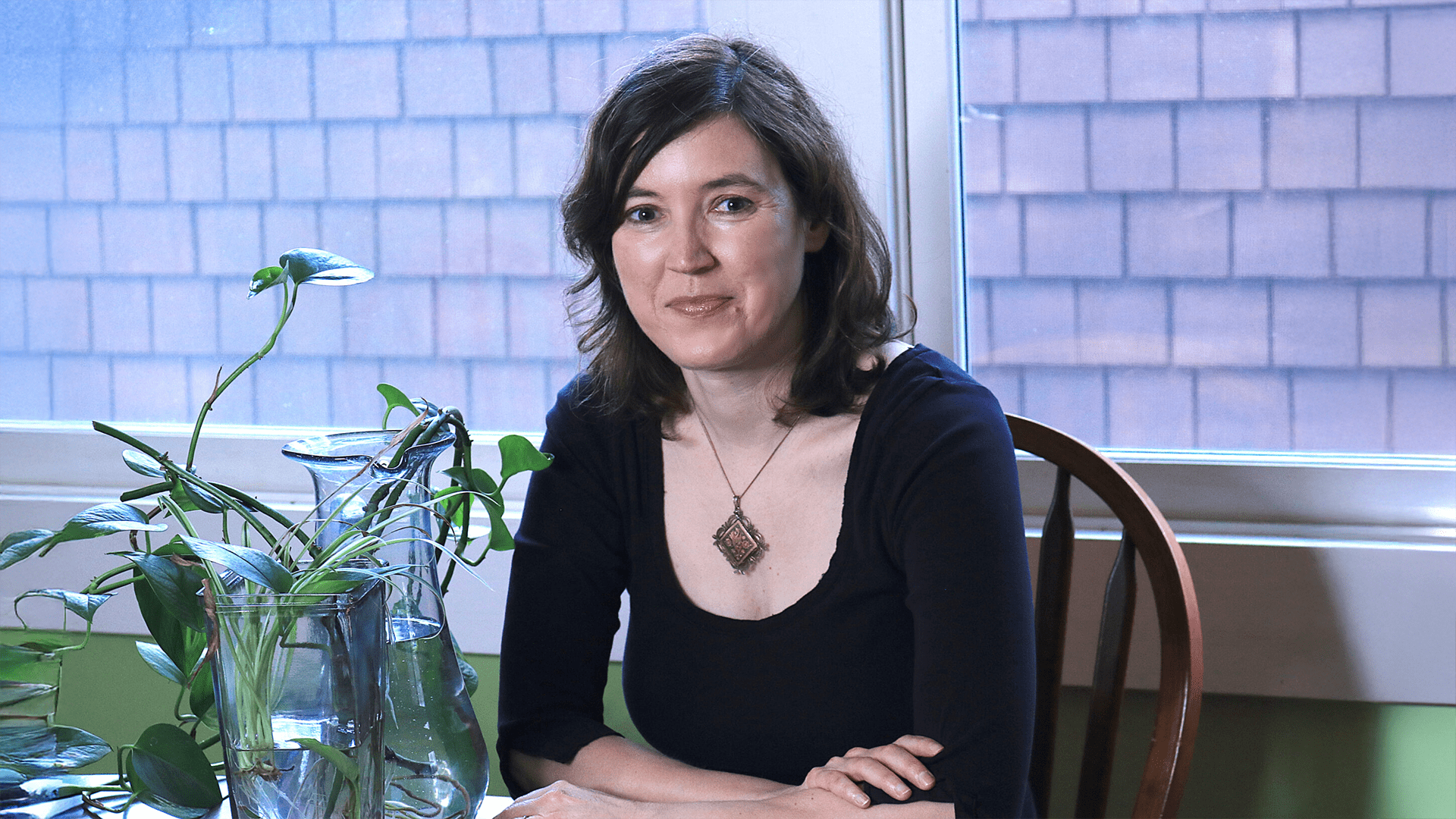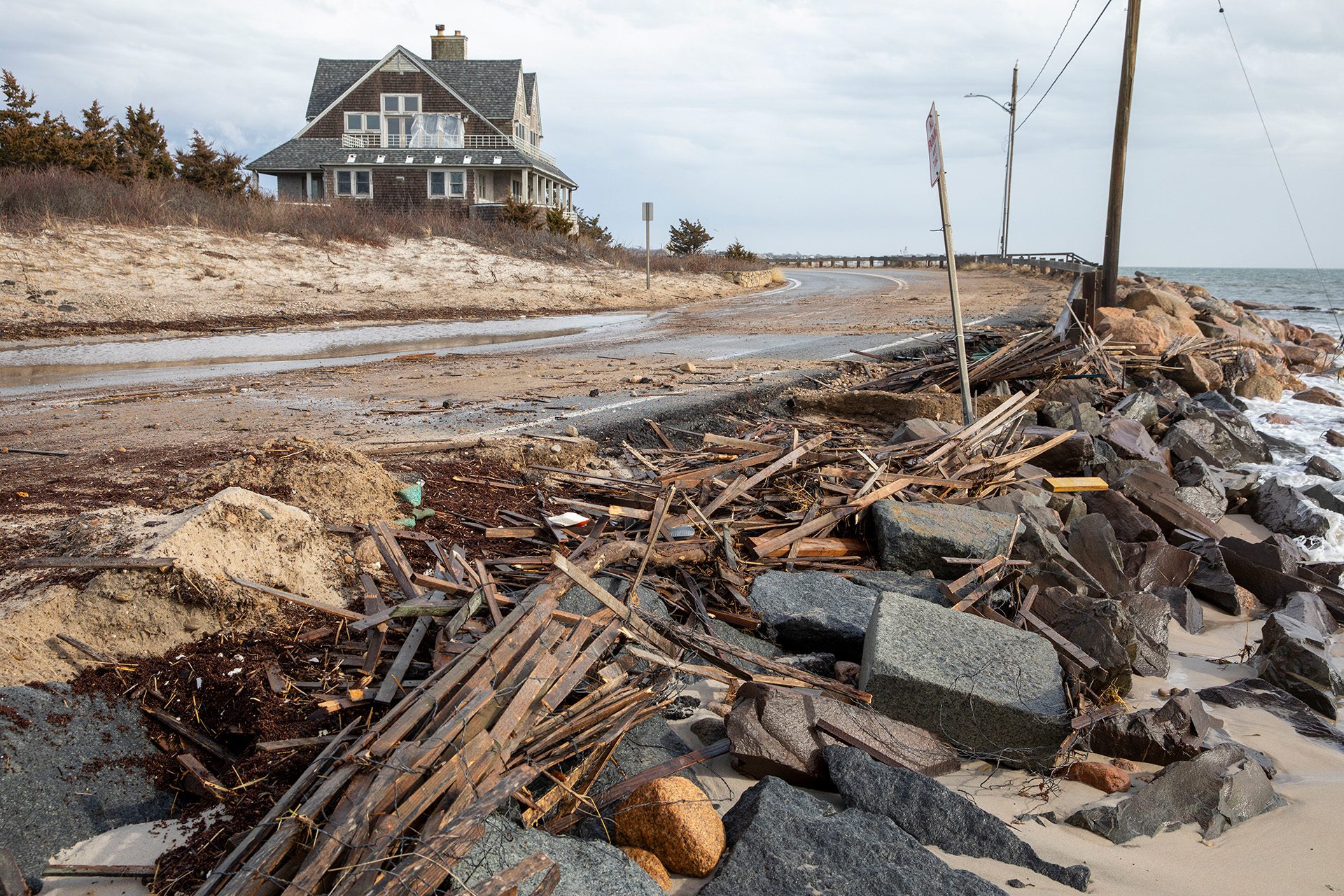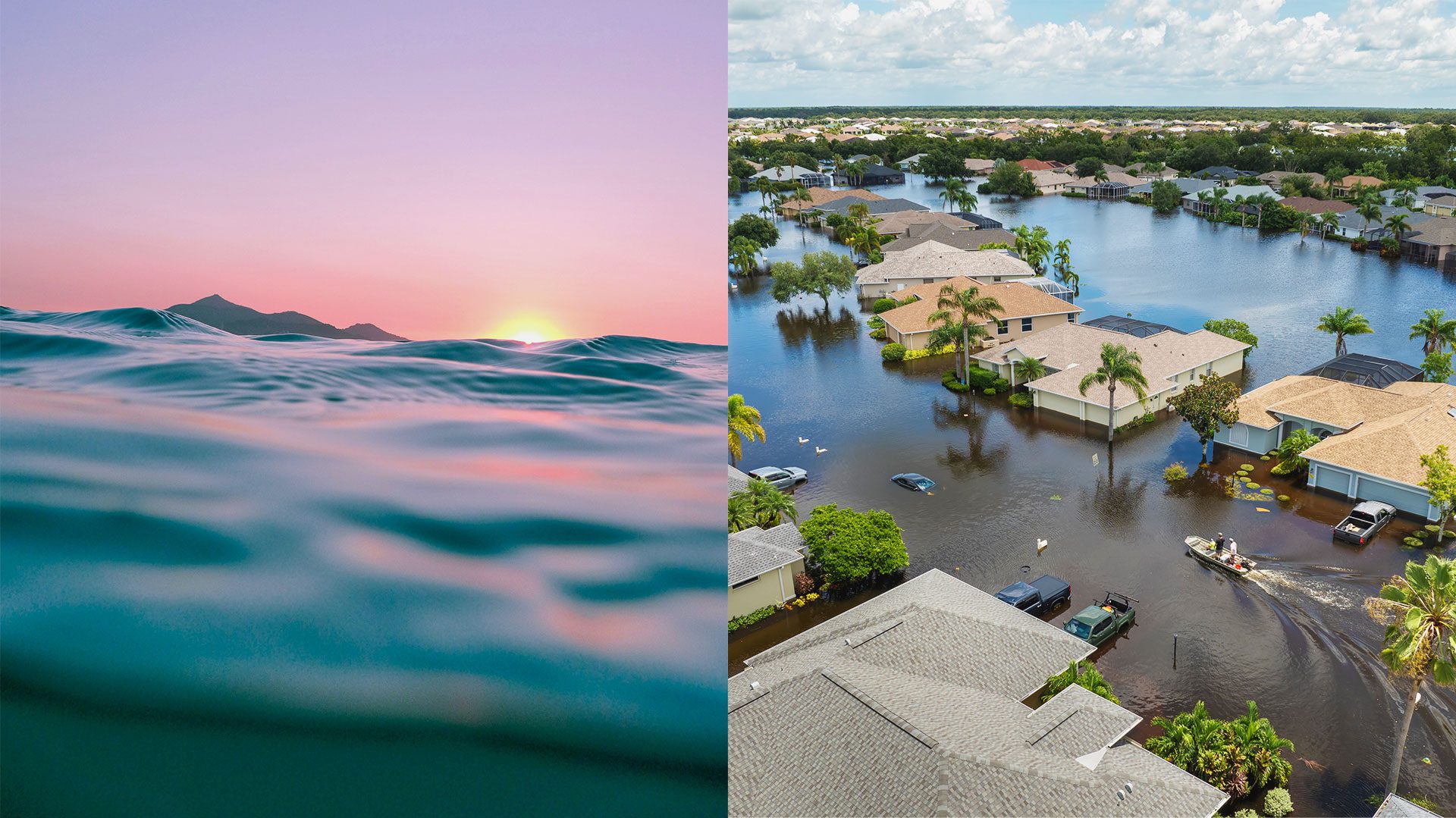Fires, floods, and forgotten places
Finding home in an extreme world with Madeline Ostrander
By Amelia Macapia | JUNE 17, 2024
Last year, Rhode Island and Massachusetts announced the largest offshore wind selection in New England history, set to power the equivalent of 1.6 million homes. These developments have sparked concern among some fishing communities, who worry about potential impacts on fisheries and fish stocks—an industry that generated over $73.6 million in economic value in Cape Cod in 2018 alone. Scientists in WHOI's Sensory Ecology and Bioacoustics Lab have been among early researchers investigating how offshore wind construction noise and vibration—particularly from live pile driving—affect local, commercially important fisheries species. Would species that spend their lives on the seafloor, like lobster, flounder, and scallops, react strongly to the high-intensity hammering that reverberates through the sediment? Or would they habituate quickly and continue their normal biological rhythms like breathing and heart rate? Researchers could potentially use this data to model and mitigate population-level effects.
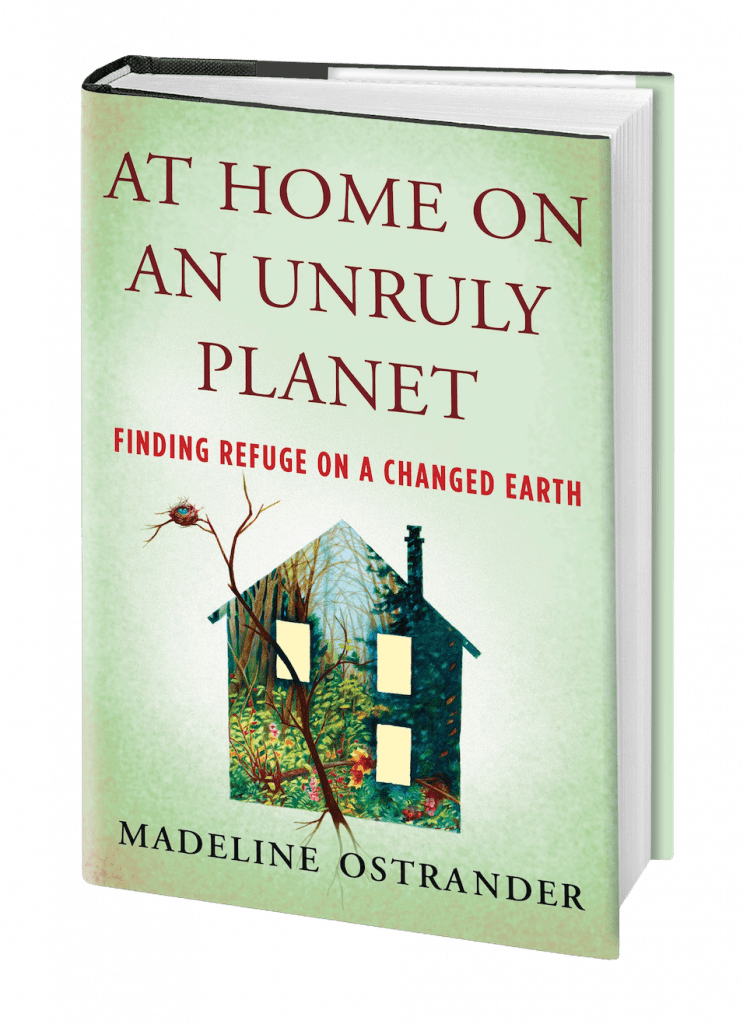
“At Home On An Unruly Planet,” published by Henry Holt & Co., won a gold Nautilus Book Award in the category of Ecology and Environment in 2022. (Image courtesy of Madeline Ostrander)
While conducting these experiments, I spoke with an award-winning environmental journalist, Madeline Ostrander, who was reporting on our work. Between trials we sat on the edge of the dock, watching the crane lift and position the pile, rearing above the water, then the snap and shake of its explosive drop.
“Wait, what did you say?!” —we took turns shouting between bursts of noise, with Ostrander pausing to listen and take notes on her yellow legal pad. The steady turns of fish pulsing and schooling with the tide, small boats coursing beneath the Woods Hole drawbridge, and the clangs of hammering set the tone for our conversation.
As she spoke about her previous reporting on environmental disasters, I learned that she had written about Washington’s Methow River Valley, where my grandmother lives on her ranch: a remote region far from the ocean, but governed by the same hydrological cycles that control our coast.
Ostrander had documented the aftermath of the Carlton Complex Fire, Washington’s single largest wildfire in state history—part of a broader trend of increasingly long and severe fire seasons. Unusually dry grass, brush, and timber ignited in a series of lightning strikes, raging out of control. Smoke plumes reached over 25,000 feet and ravaged more than a quarter of a million acres and 350 homes. Amid the haze, telephone lines went down, and cell service was out, leaving residents in the towns of Carlton, Twisp, and Winthrop with no guided escape. Eight years later, saplings and other vegetation are still growing back.
These are the stories of ecological upheaval that Ostrander weaves together across states and coasts, a stark reminder of the interconnection within the planet and the far-reaching consequences of human impact on the environment. It was this question that anchored Ostrander’s reporting: “What compromises are we willing to make in the changing climate?”
Her 2022 Nautilus Gold Star book, “At Home on an Unruly Planet: Finding Refuge on a Changed Earth,” interlinks four communities dealing with the precarity of home. She addresses a number of questions about preserving our sense of identity and culture as these ecosystems unravel. “How much do we salvage and how much do we relinquish?” she asks.
Although cultural heritage sites are overlooked by regional and global policy, in her book, Ostrander asks us to reckon with the loss of historic buildings in St. Augustine to hurricanes and sea level rise—relics of the first legally recognized free Black community in the United States—or the eroding tundra under an Inuit Alaskan community in Newtok, the result of colonization forcing a seminomadic community to settle.
“Though they have already weathered cultural change so rapid it would give most others a kind of existential whiplash … society asks them to adapt again and again: to technological, economic, and legal demands that are a mismatch with the fury and volatility of the Alaskan wilderness, and to an ever-angrier atmosphere, churned up by a polluting, global economy that the Yup’ik had almost no role in creating.”
Along a WHOI dock where Ostrander spoke with Oceanus contributor Amelia Macapia, members of WHOI's Sensory Ecology Lab conduct experiments to measure the responses of marine animals to underwater pile-driving. (Video by Matt Barton, © Woods Hole Oceanographic Institution)
Ostrander explains the global greenhouse effect in exacting, precise, and technical ways. Just as deftly as she lays out this scientific and historical overview, she asks how we can understand environmental transformations through lived experience, synthesizing community-level responses. Her account draws on extensive interviews with activists, historians, coastal engineers, disaster responders, and climate scientists. We hear from Indigenous Alaskan villagers, termed “America’s first climate refugees,” who, despite years of rejected disaster assistance, have raised millions of dollars—navigating bureaucratic processes with the U.S. Congress to pioneer relocation to hyper-insulated, energy-efficient adaptive housing as rising seas erode their land.
Can we move infrastructure like the post office or a school and call that successful relocation, like moving a lighthouse back from an eroding cliff? Interweaving stories of adaptation and loss, Ostrander does not give us easy answers. Even if we are able to limit global warming to less than 2 degrees Celsius above pre-industrial levels, the Intergovernmental Panel on Climate Change states that “many changes due to past and future greenhouse gas emissions are irreversible for centuries to millennia, especially changes in the ocean, ice sheets, and global sea level.” Despite growing displacement driven by environmental shifts, especially for marginalized communities and tribal nations, those without personal or state support remain unrecognized by international environmental law — leaving environmentally displaced communities ineligible for official refugee status.
Part of the problem, according to Ostrander, is this: “Too often we prioritize taking action after a crisis has become acute — not when it is visible on the horizon and the worst might still be averted. This approach is at least very inefficient, and especially in an area of climate crisis, it is potentially deadly.”
She notes that most people are not aware of the extent and pace of the worsening climate impacts that surround their neighborhoods.
“It isn’t possible to squint at the whole blue Earth out of someone’s kitchen window,” Ostrander writes. “But that is part of the great failure of perception that has placed us all in a climate migration crisis: we haven’t recognized how the intimate spaces of our lives and the workings of the planet are tied together.”
Here on Cape Cod, where we live at low elevation, a sea level rise of inches will result in more houses lost to the tides. On my commute to work along Surf Drive in Falmouth, the road is frequently overwashed with sand. The lot at 410 Surf Drive, once supporting a house, is now an assemblage of pilings that stand like toothpicks in loose sand. These piles are an essential record of a region changing fast. For sale at $595,000, there is no promise that the property will endure beyond a few years.
Similar scenes are unfolding across Massachusetts, where beach “renourishment” projects attempt to hold the shoreline in place by dumping sand to combat erosion. Since 1950, the state has spent more than $73 million on 380 such events — measures that are far from one-and-done. In Chatham alone, there have been 50 renourishment efforts since 1989, averaging nearly 1.4 projects per year in a continuous effort to keep pace with rising seas.
As the town of Falmouth revises coastal resilience plans and weighs abandoning certain roads, cutting services to private homes, and removing pavement altogether, Ostrander’s plea rings clear: “As the world changes into something unrecognizable, this place of seals and moose, of gray rivers full of squirming fish, and of wide, frozen plains covered with geese and swans seems to ask the mind to expand, to adjust to the things you cannot force, to figure out against all odds how to find your way home.”
